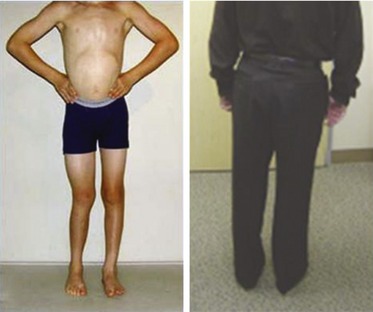CHAPTER 59 Treatment of Leg Length Discrepancy after Total Hip Arthroplasty
Patient’s perception of leg length inequality in the early postoperative period is relatively common. Fortunately, in the majority of patients this symptom resolves with time and physical therapy. However, a minority of patients, mostly those with marked leg length discrepancy, may have substantial disability as a result of persistent pain and functional impairment.1 This situation is a disturbing problem for both the surgeon and the patient. Although revision arthroplasty usually is considered to be a last resort in these cases, continuing recurrent instability, profound functional impairment (abductor weakness, dysfunctional gait, or low back pain), and failure of conservative treatment may necessitate surgical intervention. Also, it is important to realize that patient dissatisfaction with leg length discrepancy after total hip arthroplasty (THA) is one the most common reasons for litigation against orthopedic surgeons.2,3
PREVALENCE
The true prevalence of postoperative leg length discrepancy is difficult to quantify and remains unknown because of marked variation in definitions, measurement methods, and the interpretation of its clinical significance. Leg length discrepancy occurred after 14 of 85 hip replacements (17%) in one study,4 and a mean overlengthening (and standard deviation) of 15.9 ± 9.54 mm occurred in 144 of 150 hips (96%) in another study.5
ETIOLOGY
In the majority of cases of leg length discrepancy after THA patient symptoms can be attributable to “functional” causes and are not the result of true lengthening.6 In this situation the apparent discrepancy is secondary to a flexion or abduction contracture of the hip causing pelvic obliquity. The prognosis for “functional” leg length discrepancy is excellent, and in most instances the condition will improve with time and physical therapy.6,7
CLINICAL PRESENTATION
The majority of patients with minor leg length discrepancy after THA have few symptoms, and most patients with moderate leg length discrepancy have readily manageable symptoms. However, a small group of patients, mostly those with marked leg length discrepancy, may have substantial disability as a result of pain and functional impairment.1 Common symptoms include pain, paresthesias, and instability of gait (Fig. 59-1).
Leg length discrepancy after THA has been associated with complications including sciatic, femoral, and peroneal nerve palsy; low back pain6,8,9; and gait abnormalities.10–14 Nerve injury is one of the most serious complications associated with leg length inequality.15 Edwards and colleagues,16 in a review of 23 THAs complicated by peroneal and sciatic nerve palsy, noted an average lengthening of 2.7 cm (range 1.9 to 3.7 cm) for peroneal palsy and 4.4 cm (range 4.0 to 5.1 cm) for sciatic palsy. Pritchett17
Stay updated, free articles. Join our Telegram channel

Full access? Get Clinical Tree






